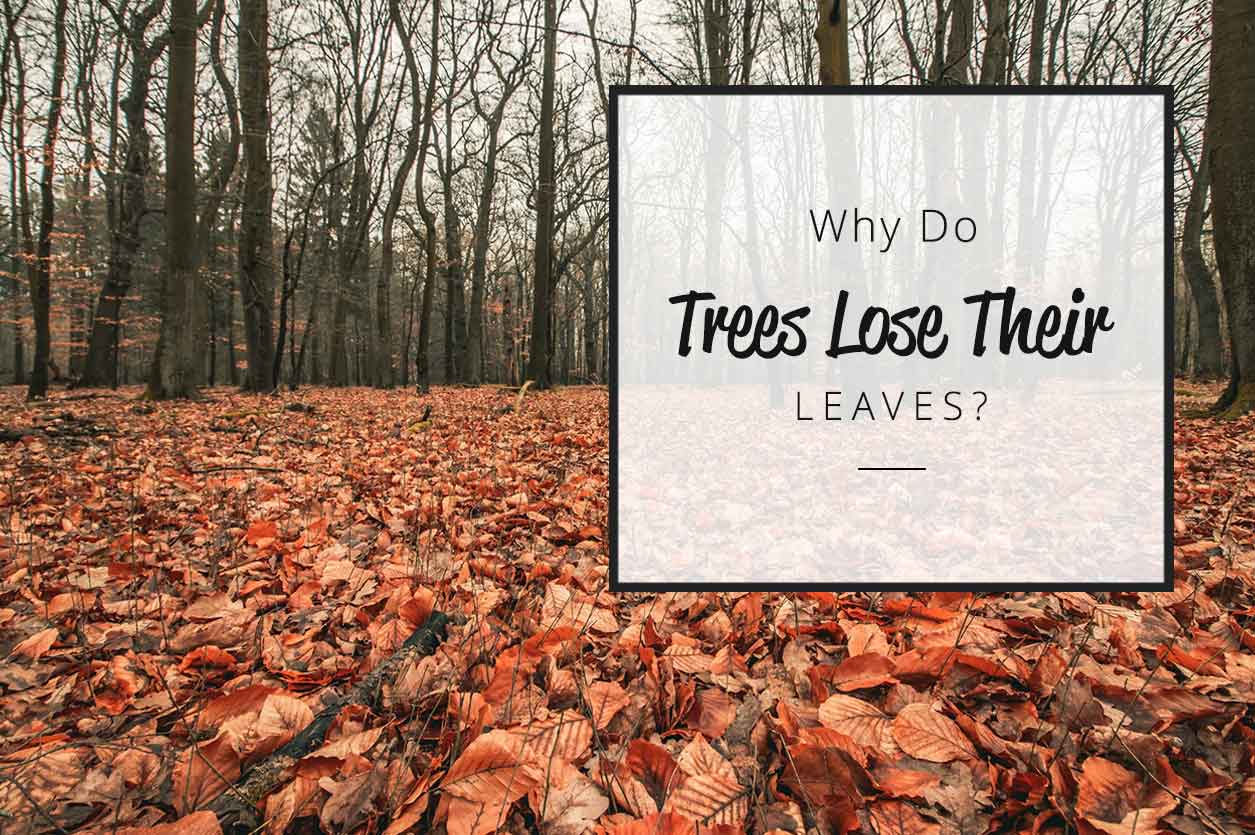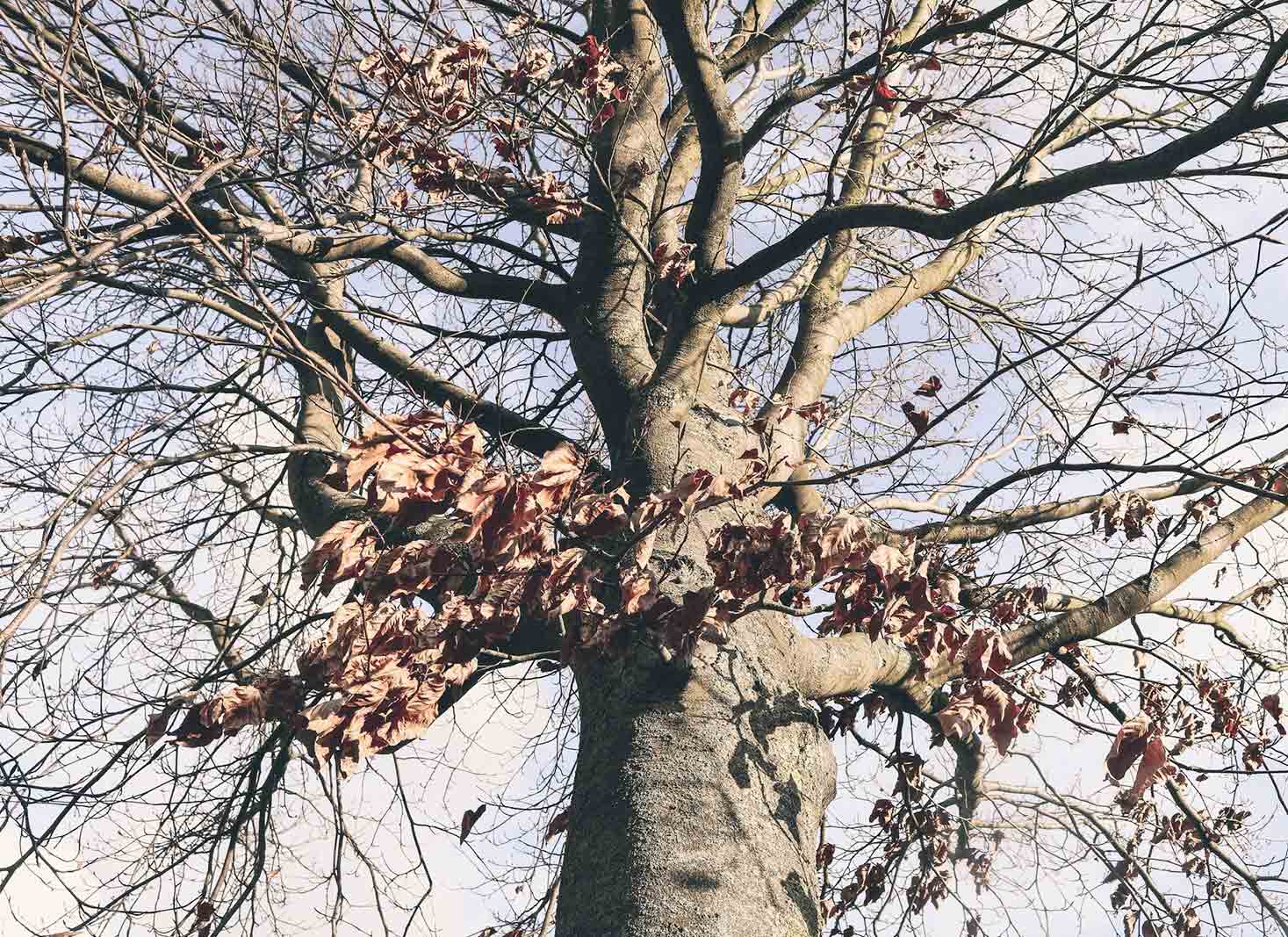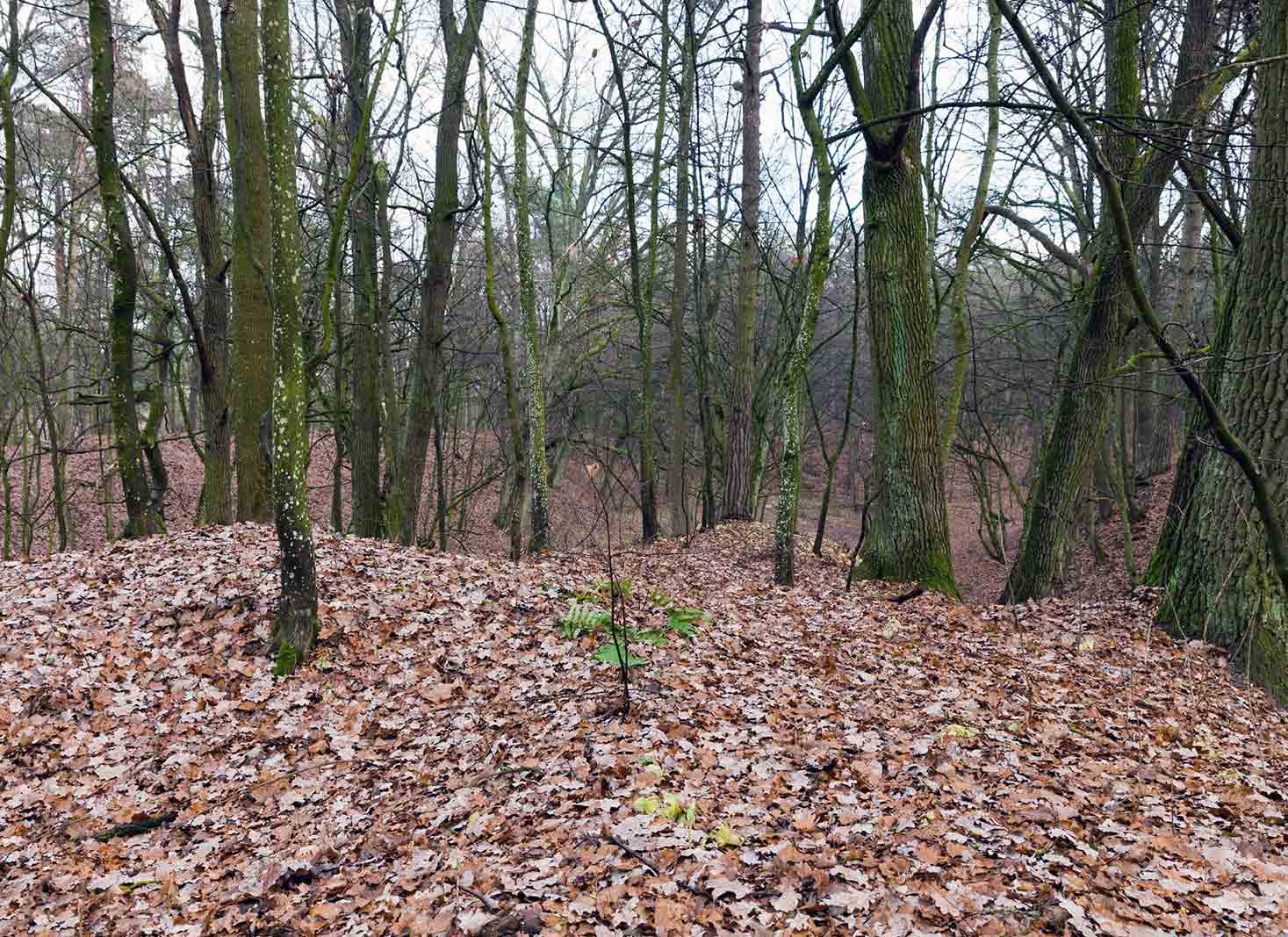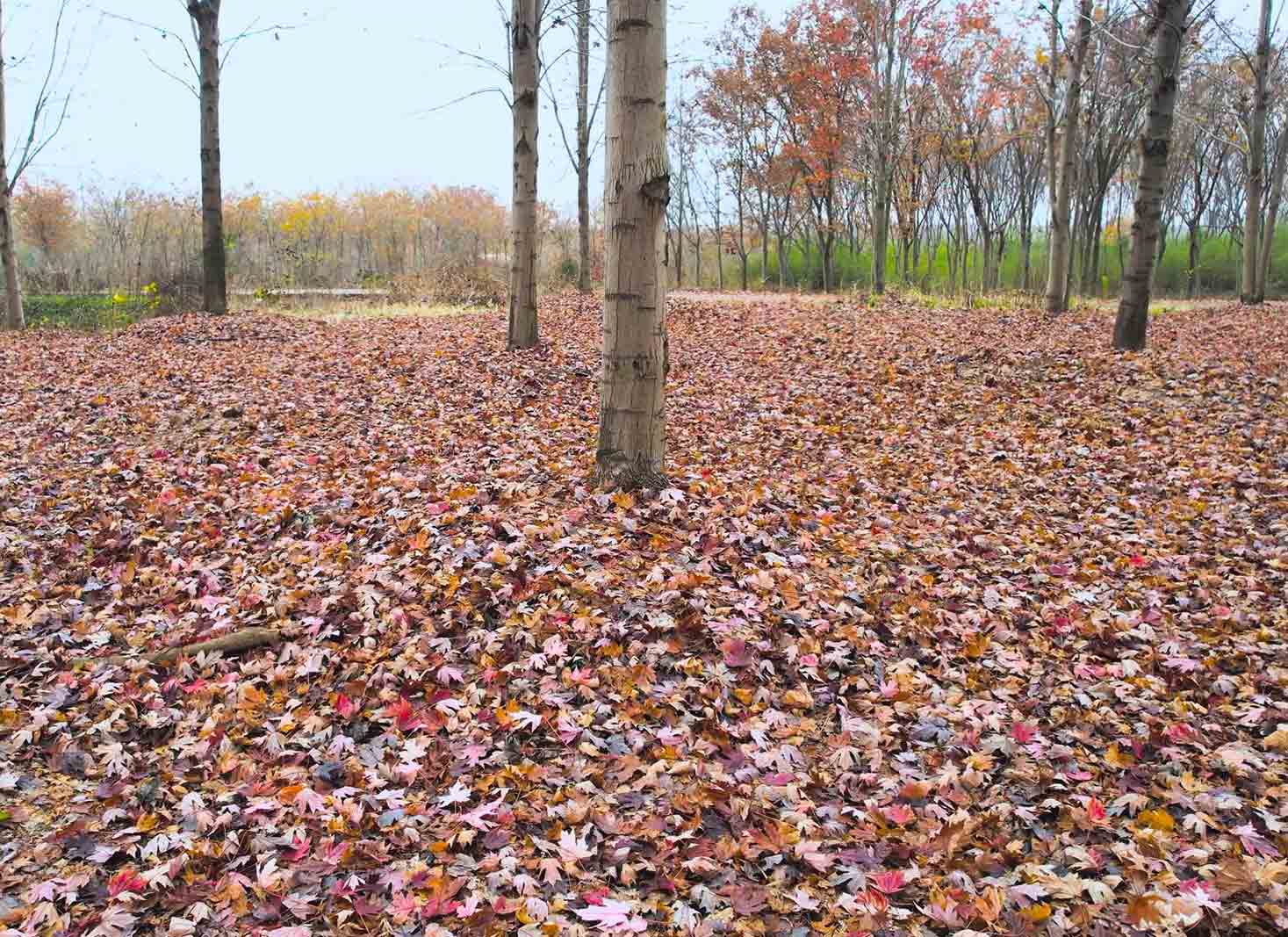Trees take on a dazzling show when summer waves goodbye and fall steps in. They shift from deep greens to eye-popping yellows, oranges, and reds. Before you know it, leaves begin their dance to the ground, and soon, trees stand tall with bare trunks and branches that look like skeletons. Ever wonder why leaves bid farewell?
Most trees lose their leaves to prepare for the harsh winter weather. It gets extremely cold and dry in most parts of the United States during the winter. As a result, water becomes unavailable for most plants, and photosynthesis slows down for evergreens or shuts down entirely for deciduous trees. So, in essence, the leaf drop reduces water loss and conserves resources.
However, not all trees lose their leaves during harsh weather. Some trees are adapted to withstand extreme conditions and remain green throughout the seasons.
Read on to learn more about why trees lose their leaves and which trees lose their leaves and which do not.

What we cover
ToggleWhat is the process of shedding leaves called?
The process of shedding leaves is known as abscission, and it is exhibited in deciduous trees. Abscission is a naturally occurring phenomenon that involves the separation of leaves, flowers, and fruits from plants by specialized cells.
As the weather changes, the days become shorter and colder, and there is less daylight. This slows down the flow of auxin, the hormone responsible for plant growth and development, to the leaves. At the same time, the levels of ethene, the hormone that initiates leaf drop, increase.
Increased ethene production sends a chemical message to the leaves that it is time to start shedding their leaves for the harsh winter weather. Once the message is received, abscission cells form at the base of the leaf.
How does abscission take place?
At the beginning of the abscission process, trees reabsorb nutrients from their leaves and store them in their stems and roots for later use. Chlorophyll, the pigment responsible for the green color in leaves, is disintegrated for its nutrients. That’s why trees turn yellow, orange, or red in the fall.
Separation of leaves can happen in either of two ways:
- The middle lamella between two cell layers dissolves, but the primary wall does not.
- The middle lamella and the primary wall between the two cell layers in the abscission zone dissolve.
As the cells weaken their cell walls and others expand to break connections between the already weakened cells, a thin bumpy line of cells forms where the leaf stem meets the tree branch and starts “pushing” or “cutting” off the leaves from the trees. Within a few days or weeks, the leaves start dropping. Once the leaves fall, most trees develop a protective layer of cells over the exposed area.
Reasons why trees drop their leaves
Here are the main reasons why trees lose their leaves:
To conserve water and energy
The main reason why trees drop their leaves is to conserve water and resources to use during harsh weather conditions. During hot weather in summer, the tree conserves moisture within its trunk and prevents it from drying out.
During winter, the cold and dry weather can cause the leaves to dry out and die. So, trees lose their leaves to conserve water and nutrients to get them through the winter.
Deciduous trees become dormant during the winter, but they continue to actively and efficiently use the resources and energy to expand and strengthen their root systems.

To survive the upcoming harsh weather
Trees drop their leaves to prepare for the upcoming harsh weather conditions. Most deciduous trees have broad, flat leaves that can easily be damaged by cold or dry weather, unlike evergreens, which have small needle-like leaves that are weather-resistant.
Leaf drop allows wind to blow through the branches, thus minimizing stress on the trees—a major concern in winter gales and storms.
To help with pollination
Leaf drop also helps with pollination. When spring comes, it becomes easier for the pollen to be transferred by the wind to other trees.
When do trees lose their leaves

Most deciduous trees lose their leaves at the end of the fall to prepare for winter. The word deciduous originates from the Latin word decidere, which means to fall off or down.
There are, however, a few deciduous trees that do not drop their dry brown leaves and tend to hold onto them throughout winter. Such a phenomenon is called marcescence, and it happens when the abscission layer on these trees fails to completely form until spring.
Marcescence mainly occurs on sexually immature parts of the plants (parts that have not formed flowers yet). Trees mostly display marcescence when young but lose the characteristic when they mature.
Leaf drop can also be manifested in the summer as the tree tries to conserve moisture to prevent it from drying up.
Do trees drop leaves when stressed?
Yes. If a tree starts losing its leaves in the summer or too early in the fall, it means it is stressed and is trying to conserve resources to manage the stress. Extreme heat, disease, and too much or too little water are the culprits behind early leaf fall in trees (losing leaves at the wrong time of the year).
What types of trees lose their leaves in the fall?
As we have already established, trees that lose their leaves in the fall are called deciduous trees. These trees have broad, flat leaves that fall off during the colder months of the year to conserve resources. Examples include:
- Maple tree
- Oaktree
- Beech tree
- Birch tree
- Ash tree
- Poplar tree
- Aspen tree
- Willow tree
What about the trees that do not lose their leaves in the fall?
Trees that do not lose their leaves all year round are called evergreens. These trees are characterized by small, needle- or scale-like leaves that can survive harsh weather like extreme cold or heat. Examples include:
- Pine tree
- Fir tree
- Hemlock tree
- Redwood tree
- Spruce tree
- Yew tree
- Cypress tree
Are there exceptions?
Yes. Some deciduous trees, such as the oak tree, hold on to their leaves throughout the winter and shed them in the spring when new growth occurs. Similarly, some evergreens, such as tamarack trees, shed their leaves every fall.
Are fallen leaves good for trees?

Yes, fallen leaves are good for the tree as they are part of its natural cycle. When leaf mulch decomposes, it fortifies the soil and provides natural habitats for hundreds of valuable insects and microorganisms that provide the roots with nutrients that protect the tree during the freezing winter weather.
Why are there different colors of leaves?
During spring and summer, most trees exhibit beautiful and vibrant green leaves. This green color is usually due to chlorophyll, a natural pigment found in plants that helps convert sunlight into food energy.
In the fall, the weather becomes cooler, and natural light reduces. Chlorophyll starts to break down, leaving other colors such as yellow, orange, and red. These pigments are called carotenoids and are manifested in most deciduous trees.
- Red: The red pigment in leaves is called anthocyanins and is responsible for the red color in leaves. Examples of red-colored trees include scarlet oaks and red maples.
- Orange: Carotene is the orange pigment that causes the orange color in leaves. Sugar maple is a classic example of an orange-colored tree. Carotene is also present in carrots.
- Yellow: The yellow color in leaves is due to a pigment called xanthophyll and is displayed in ash, aspen, beech, and birch trees.
Why is fall a great time to plant trees?
Most arborists and tree specialists prefer to plant trees in the fall. This is because trees do not have much to do in the fall and can become established much faster.
Deciduous trees like maples, oaks, poplars, elms, birches, willows, and cherries lose their leaves in the fall and use the stored energy to grow and expand their root systems. This gives the tree greater access to water and nutrients to support it during the growing season.
That said, newly planted trees can devote energy to growing and expanding their roots. If the tree is planted in the spring or summer, it will have to divide its energy and resources to support the roots and leaves. This can add stress to the tree, so it may not grow as fast as when planted in the fall.
What would happen if deciduous trees didn't lose their leaves at all?
If deciduous trees do not shed their leaves, water, and nutrients will be trapped in the leaves when the tree goes dormant in the winter. So, when spring comes, there will be no resources to keep the tree alive. The tree will therefore die.
FAQ's
Yes, deciduous trees can lose their leaves in warm climates to reduce water loss and prevent the tree from drying up. This is especially important during the hot summers.
Yes, healthy trees that lose half of their trees can survive. If the tree loses more than half of its leaves, it can survive defoliation for two to three years in a row, provided it is healthy. However, if the tree is stressed by external factors like drought or excessive heat on city pavements, it may not survive repeated exfoliation.
If the tree’s trunk is peeling, has cracks or splits, or has missing leaves and hanging branches, it may be dying or dead already. If you suspect your tree is dying or notice the above signs, call your arborist to inspect and remove it if necessary.



